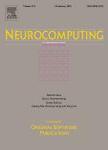版权所有:内蒙古大学图书馆 技术提供:维普资讯• 智图
内蒙古自治区呼和浩特市赛罕区大学西街235号 邮编: 010021

作者机构:Beijing Normal Univ Sch Syst Sci Beijing 100875 Peoples R China Chongqing Univ Posts & Telecommun Key Lab Ind Internet Things & Networked Control Minist Educ Chongqing 400065 Peoples R China Anhui Univ Sch Artificial Intelligence Hefei 230601 Peoples R China
出 版 物:《NEUROCOMPUTING》 (神经计算)
年 卷 期:2024年第567卷
核心收录:
学科分类:08[工学] 0812[工学-计算机科学与技术(可授工学、理学学位)]
基 金:Beijing Natural Science Foundation, China National Natural Science Foundation of China Beijing Normal University Tang Scholar, China Open Research Project of the State Key Laboratory of Management and Control for Complex Systems, Institute of Automation, Chinese Academy of Sciences Open Research Project of the Key Laboratory of Industrial Internet of Things & Networked Control, Ministry of Education, China [2021FF10]
主 题:Adaptive dynamic programming Reinforcement learning Zero-sum differential games Fault-tolerant control Multiplicative faults
摘 要:In view of zero-sum differential games, this paper addresses the fault-tolerant tracking control (FTTC) problem for nonlinear systems with multiplicative actuator faults. By augmenting the nominal system, the trajectory tracking problem is transformed into an optimal regulation problem. A fault observer is designed to estimate the multiplicative actuator fault factor. In order to better reflect system performance, a comprehensive performance index function including the trajectory tracking error, the control input, and the multiplicative actuator fault is constructed. By considering the control input and the multiplicative actuator fault as two players in the zero-sum differential game (ZSDG), the FTTC problem is thus transformed into a ZSDG problem. Then, a fault-tolerant control based on ZSDG is designed by solving the Hamilton-Jacobi-Isaacs (HJI) equation. Since the HJI equation is difficult to solve, a critic neural network is constructed to obtain its approximation, which constitutes the Nash equilibrium of the ZSDG. The closed-loop faulty system is guaranteed to be uniformly ultimately bounded via the Lyapunov s direct method. The effectiveness of the developed FTTC method is demonstrated by two simulation examples.